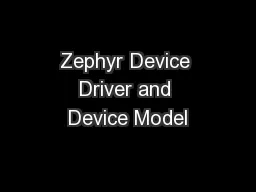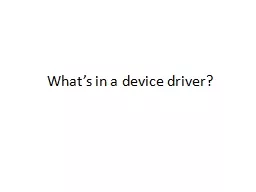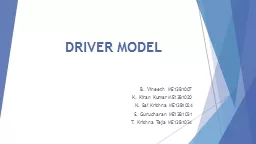PPT-Zephyr Device Driver and Device Model
Author : danika-pritchard | Published Date : 2019-03-14
Computer Science amp Engineering Department Arizona State University Tempe AZ 85287 Dr YannHang Lee yhleeasuedu 480 7277507 Device Model To support initializing
Presentation Embed Code
Download Presentation
Download Presentation The PPT/PDF document "Zephyr Device Driver and Device Model" is the property of its rightful owner. Permission is granted to download and print the materials on this website for personal, non-commercial use only, and to display it on your personal computer provided you do not modify the materials and that you retain all copyright notices contained in the materials. By downloading content from our website, you accept the terms of this agreement.
Zephyr Device Driver and Device Model: Transcript
Download Rules Of Document
"Zephyr Device Driver and Device Model"The content belongs to its owner. You may download and print it for personal use, without modification, and keep all copyright notices. By downloading, you agree to these terms.
Related Documents














![USB Device Redirection [MS-RDPEUSB]](https://thumbs.docslides.com/1051561/usb-device-redirection-ms-rdpeusb.jpg)